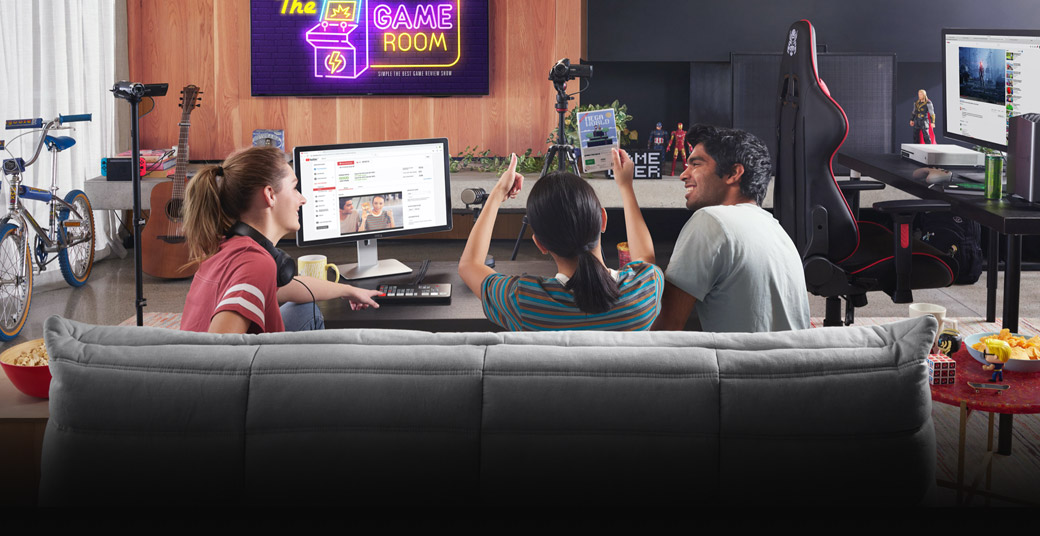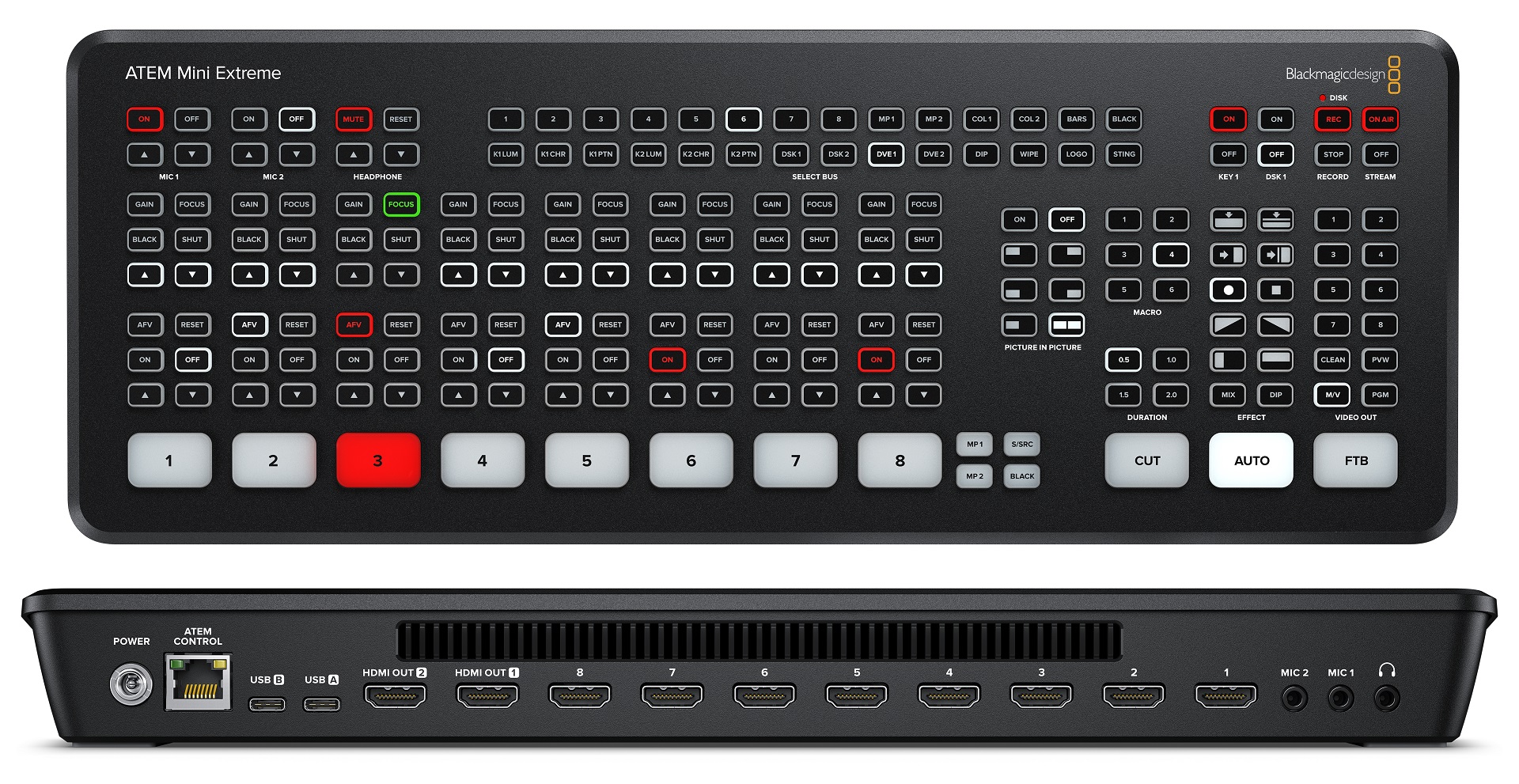
It can stream program out directly via an ethernet connection to all your standard streaming services. While the total number of outputs is not impressive, BMD covered all the essential bases with the Mini Pro. The Mini Pro combats this by allowing latency to be dialed into the audio inputs, up to 8 frames. With most small switchers, latency tends to be an issue, and keeping the audio and video in sync is a chore. The Mini Pro can take audio from any of the HDMI inputs as well as the two 3.5mm mic inputs.

The Mini Pro is equipped with a Fairlight audio mixer that features a parametric EQ, compressor, limiter, expander, and noise gate on every audio input channel. While the video inputs are impressive, Blackmagic Design (BMD) didn’t skimp on the audio for this switcher. Besides, when it comes to streaming, latency is simply not an issue, because of the inherent lag in the medium itself. Each scaler adds one frame of latency, and if you put that input in the DVE, it adds one more frame, making this a fast switcher for being so small. The scalers will not handle 4K UHD, which is fine because streaming 4k is simply ridiculous.

Each input is scaled and will accept any format and frame rate in the HD spectrum with an HDMI connection.

It’s a four-input HDMI switcher with multi-viewer, recording, and streaming capabilities.

The Mini Pro is now the mid-tier of the “Mini” line.įor those who have been hiding under a rock and haven’t heard of the ATEM Mini line, this video switcher has some pretty great specs. However, while I was reviewing it, the Mini Pro ISO was announced. At the time I received it, the Mini Pro was the top tier switcher on the “mini” platform. The opportunity to take a hands-on look at the ATEM Mini Pro was something I could not pass up. They are known for two things, iterating quickly and their products being so in demand that they literally can’t meet orders. Blackmagic Design has always been a company to watch.


 0 kommentar(er)
0 kommentar(er)
